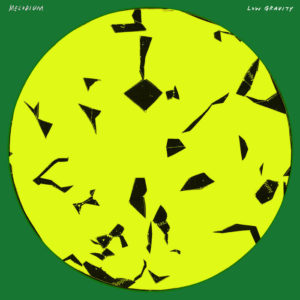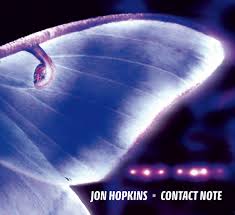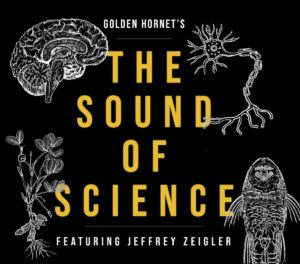Jill Tarter
'It Takes a Cosmos to Make a Human'
The Search for Extraterrestrial Intelligence — or SETI — goes beyond hunting for E.T. and habitable planets. Scientists in the field are using telescopes and satellites looking for signs of outright civilizational intelligence. One of the founding pioneers in this search is astronomer Jill Tarter. She is a co-founder of the SETI Institute and was an inspiration for Jodie Foster’s character in the movie Contact, based on the novel by Carl Sagan. To speak with Tarter is to begin to grasp the creative majesty of SETI and what’s relevant now in the ancient question: “Are we alone in the universe?”
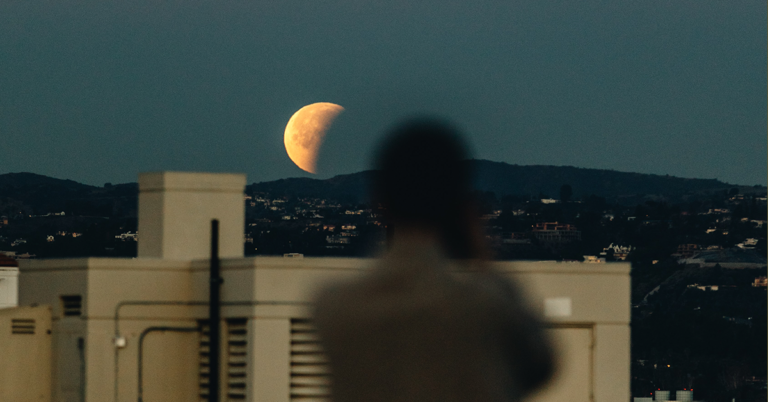
Image by Nathan Dumlao, © All Rights Reserved.
Guest
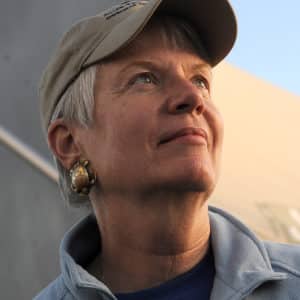
Jill Tarter is the co-founder and chair emeritus for SETI Research at the SETI Institute in Mountain View, California. She currently serves on the management board for the Allen Telescope Array. She has been awarded two Exceptional Public Service medals from NASA and the Women in Aerospace Lifetime Achievement Award. In April of 2021, she was elected to the American Academy of Arts and Sciences.
Transcript
Krista Tippett, host: I’m a big science fiction lover, and I’ve always thought of SETI, the search for extraterrestrial intelligence, in that light. But it’s not a search for E.T. or for habitable planets with water. Its telescopes and satellites are seeking signs of civilizational intelligence: advanced technologies as great as or beyond our own. And the astronomer Jill Tarter is one of SETI’s founding pioneers. She was an inspiration for the character Jodie Foster played in the movie Contact, based on the novel by Carl Sagan. To speak with Jill Tarter is to begin to grasp the creative majesty of SETI and what is of present relevance in the ancient question of whether we’re alone in the universe.
I’m Krista Tippett, and this is On Being.
[music: “Seven League Boots” by Zoë Keating]
Jill Tarter lives in Northern California, where the SETI Institute is based. And she’s the subject of a biography by Sarah Scoles, called Making Contact. I spoke with her in 2019.
I did read — and I think this is in Sarah Scoles’s biography — that you first considered the possibility of alien life when you were visiting the Florida Keys as a child. Did that actual thought cross your mind?
Jill Tarter: Yeah, it did. My aunt and uncle were literally beachcombers. And when I was a small child, we’d visit them in the Manasota Key, two or three times a year. And so I was walking along the beach on this beautiful key, very uninhabited, very dark, so the sky was beautiful. I was walking with my dad, holding his hand, and he was trying to teach me various constellations. And I looked up, and I understood that those stars in the sky were like our sun. And it just seemed absolutely natural to me that on a beach, circling one of those stars up there, there would be another creature walking along with its parent by the edge of an ocean and looking up and seeing our sun as a star in their sky. It just seemed obvious to me. So that was my first introduction to thinking about life beyond Earth.
Tippett: And I think you could really see the night sky, in the Florida Keys, probably more than is possible now. It wasn’t so much a tourist destination.
Tarter: No, and of course, that key now is totally overpopulated and not so dark. But back then, it was a beautiful, uninhabited mostly, and gorgeous, lovely place.
Tippett: I often ask a question at the beginning of my interviews, whoever I’m speaking about, about whether there was a religious or spiritual background of one’s childhood, however you would describe that now. And I have to say that that picture of you walking along the beach, with your father telling you about the stars, does feel like that, to me. I don’t know; did you speak about it in terms of these great, existential questions that are associated with whether we’re alone in the universe and all of that?
Tarter: No, not back then, and indeed, that was the kind of spirituality that I’ve embraced in my life. Organized religion is not my thing. I was shipped off to Sunday school for a while and asked all kinds of embarrassing questions, and seriously, they asked me not to come back. [laughs]
Tippett: [laughs] Gosh. OK. Well, you’re always described as a pioneer. And it’s almost hard for me to believe that — just how you had to be a pioneer, just by virtue of being a woman — that you had to take home economics, really, before you could take woodshop, that you were the only female engineering student in your class at Cornell, and that they locked the women [laughs] in their dorms from 10 at night to 6 in the morning?
Tarter: They really did. They absolutely did. It was called “in loco parentis,” was the policy at Cornell, in terms of its young women.
Tippett: But you did, nevertheless, become one of the first scientists to embark on this methodical search for extraterrestrial intelligence. And I think that that work on looking for habitable planets, the exoplanets, has been in the news more, recently. But just to focus in on what you — the piece of this that you were working on is — here’s a way you’ve said it that feels very clear to me, as a non-astronomer: “SETI uses tools of astronomy to find someone else’s technology out there.” So you’re looking — rather than looking for planets, you’re looking for technologies, for signals of technologies, of something engineered, not natural, as an expression of civilizations out there.
Tarter: That’s right. We can’t find intelligence at a distance. Maybe we could define people listening to your podcast as intelligent, because they’re listening, but it’s hard to know that, remotely. So we’ve just used technology as a proxy for intelligence, and we’re trying to find places in the sky where something has used technology to modify their environment in ways that we could detect over interstellar distances, which are vast. And the amazing thing, to me, over my career, is that there have been two enormous game changers, the first being finding planets around other stars, which is a discipline that actually, SETI started.
So back early on, in the ’70s, when we were starting to do SETI, we did not know if other stars had planets. We literally only knew about the nine planets in our own solar system. And so we started holding workshops and bringing in people who built instrumentation and who were also curious about this question about planets beyond our solar system. One of the participants was Bill Borucki, who eventually led the whole Kepler mission. And he began thinking about finding a planet, because a certain fraction of planets would pass in front of their star when being viewed by our telescopes and would cast a shadow, and the light from the star would dim. And it would do that, periodically.
And he wrote a paper with Audrey Summers, at the epoch where we were doing these workshops, where he suggested that using these transits would be a good way to find planets. And literally one week shy of 25 years later, he was able to launch the Kepler spacecraft. And that was fortuitous, for those of us that are interested to know about life beyond Earth, because now we know there are more planets than there are stars in the galaxy; that is, every star, on average, has one or more planets. And so there’s a lot of real estate out there. And that became really important.
Tippett: It’s so interesting, isn’t it? I know that’s what you mean, when you say that this was a game-changer in your field, but it’s just one of these examples of how the best possible understanding and intelligence can completely evolve, in a very short span of time — that we see the world one way, and then we see something that changes everything we thought we believed.
Tarter: We do reserve the right to get smarter.
Tippett: [laughs] Right, right.
Tarter: And then, of course, the other game-changer is extremophiles — types of life living in environments on this planet which, when I was a student, I was told were absolutely sterile — no chance of life there. Well, once we developed the tools for recognizing life, it turns out that anywhere that there’s even the smallest amount of water, we can find life making a living in all kinds of different ways. And it’s amazing to me, there’s bacteria living in the cooling waters of nuclear reactors, in that huge radiation environment. There’s life that’s living in boiling battery acid around volcanos. There’s life living in ice. There’s life living at the bottom of the ocean around hydrothermal vents, and not just microbial life — great, huge tube worms, and a whole ecosystem. So I think that part of the lesson there is, we need to stop projecting what we think onto what we don’t yet know. So we were totally wrong, and now extremophiles and exoplanets suggest there’s just a huge amount of potentially habitable environments out there.
Tippett: I do think that what we’re learning about our earthling brains, also, though, suggests that that’s a hard thing for us to do, not to project assumptions.
Tarter: Definitely. Definitely, but we need to distinguish between what we know and what we think is, but have not yet verified and found evidence for. We still are wedded to the idea of liquid water, because all biology that we know, here on this planet, uses that as a solvent. But at least some of the community has begun to think out of the box or more broadly about what life is, and could there be life using some solvent other than water or some anchoring element other than carbon?
Tippett: And then that really changes everything, right?
Tarter: It does. This weird life is an interesting concept. And indeed, the National Academy of Science’s study on this predicted that it not only might exist on some other world with different environmental conditions, but it also might exist on this planet. And in certain regions, particularly regions that are very limited in their access to water, some other type of life may have outcompeted life as we know it, and we haven’t found it simply because all the tools that we use to find life are based on life as we do know it, and DNA chemistry.
Tippett: I can imagine that — was astrobiology even a term when you were — I can imagine that just the field that you entered and the variations on, well, on astronomy, but everything that surrounds that — that that’s also so very different from when you were being locked into your dormitory at Cornell from 10 to 6. [laughs]
Tarter: [laughs] Certainly. Certainly was. So astrobiology didn’t exist, but something called “exobiology” did, led by a scientist named John Billingham, sat NASA Ames research. And those folks, starting with the Viking mission in the ’70s, were thinking about life on other worlds. So the Viking I and Viking II landers had life detection instrumentation on them, as well as instruments to study the geology of the planets, and so people were thinking about life somewhere else. There was a huge hiatus between Viking, whose life detection experiments on the surface were not successful, and the rise of astrobiology. And it had to do, I think, in large part with the discovery of extremophiles on this world and our desire to build techniques and technologies that could study them.
Tippett: That’s so interesting.
Tarter: And then, after quite a long hiatus, folks got really wound up about the potential for life beyond Earth, as we started to find planets around other stars. And the great thing, from my point of view, is that because this is a new field — we’re creating it as we’re going along — it isn’t a field that’s siloed, isolated, and stuffed up at the top with — excuse me — old white male scientists. So we’re getting the best and the brightest of our young students interested in this subject, because they can see that there might be, in fact, within their careers, fabulously exciting discoveries. And actually, I think, maybe the best of the best of the young astrobiologists are women. So they’re not just populating the traditional biological labs, but they’re really interested in biology elsewhere, and it’s exciting. I mean, I wish I weren’t so old, because I think this century is going to tell us about life beyond Earth in any one of a number of ways, and I’m not going to be around to experience those discoveries, probably. But it’s an exciting time.
Tippett: I was always a big lover of science fiction, and I remember — at one of those ages where you’re starting to meet really big ethical, existential questions, I remember somebody proposing that one of the reasons we’d never found any other civilizations is that any civilization sophisticated enough to travel into space or transmit signals we could understand would have destroyed itself by way of that same technological sophistication. Of course, this is nuclear arms race years. But I remember being so just horrified at that thought. I can’t remember how old I was, but I didn’t know what to do with it.
And I want to — this will make sense; this is not a non sequitur, but the Drake equation is really important to you and your field, and I do want to talk about that, because this feels like something that the rest of us should at least know exists. One of the things in the Drake equation — it’s about the number of technological civilizations we might be able to detect. And one of those things is longevity, which seems to me a way of pointing at that science fiction childhood question.
Tarter: Yeah, actually, that’s one of the reasons that I am always enthusiastic about talking about SETI and working on the problem, because this is something that most people probably don’t comprehend, but in order for us to be successful and detect evidence of someone else’s technology, that technology has to be close to us — not only close in space, but close in time. That is, they have to be co-temporal with our technology over the ten-billion-year history of our galaxy. And statistically, the only way that that’s going to happen is if, on average, technological civilizations last a long time — that their longevity is great. So from my point of view, that’s what a successful detection of someone else’s technology would tell us — that it’s really possible to have a long future, in spite of the challenges that we see today. I think that’s the best message that the detection of someone else’s technology could bring to us — that it’s possible to survive your technological adolescence. They won’t tell us how, probably, but the fact that somebody else made it through, I think, is an important and motivating factor.
[music: “Aurora Borealis” by Melodium]
Tippett: I’m Krista Tippett, and this is On Being, today with astronomer Jill Tarter.
[music: “Aurora Borealis” by Melodium]
One of the interesting things that you say is that in physics — I think this is one way you’ve said it — in physics, we have this funny — we have counting: we count one, two, infinity. So right now we only have one example of civilization as we define it — intelligence, technological advance as we define it. But you’ve said that the moment a second example is found, then there is reason to believe that there are many.
Tarter: That’s right. Number two is the all-important number.
Tippett: That’s so interesting.
Tarter: So we don’t know whether life on this planet is due to hugely, hugely improbably contingencies that aren’t going to line up and reproduce themselves somewhere else. But the moment that you find a second example of life, then you know that this is just the results of physics and chemistry, and it will happen elsewhere, whenever the conditions are similar. So number two would mean that intelligent life, or technological civilizations, are widespread. So in our own solar system, we are looking at missions that will explore other planets and moons of the solar system, looking to see if there’s additional life.
Now, if we find it, either extinct or extant, we will have to ask a second question, and that is, is the life that we found off of Earth related to life on Earth? Because early in the formation of the solar system, there was a lot of rock-swapping going on, a lot of collisions that were energetic enough to blast rocks off the surfaces of the various newly forming planets. And if life existed on one of them, it might have hitched a ride as microbes on a piece of rock that landed on Earth, and seeded life here. Or it could have gone in the other direction — life from Earth could’ve hitchhiked and found itself on another planet or moon of our solar system. So we need to be very careful and try and decide whether the life that we’ve found is the result of a second genesis, independent of life on Earth, and in that case, we have much optimism that life will happen everywhere, or is that life related to us and is an example of what we call panspermia — spreading life around? In which case it really doesn’t give us much reason to believe that life would be ubiquitous and plentiful beyond our solar system.
Tippett: Somewhere, you said, “We are part of a billion-year lineage of wandering stardust.” So you’re saying if it turns out that it’s related, then that “one, two, infinity” thinking doesn’t quite apply. We really need it to …
Tarter: No, it would be 1 and 1.1, not one, two.
Tippett: [laughs] All right. So you were the inspiration and, to some degree, the model for the character Jodie Foster played in the movie Contact, Ellie Arroway, which was based on a book by Carl Sagan. And of course, in the movie version of the story of what you’ve been engaged in your whole life, there is a beacon detected from space, and humanity builds the machine to find it, and something wondrous happens. And I feel like I have to ask you this question, and I also feel that even in the time we’ve been speaking right now, the answer is not obvious. But the question is, it’s hard to imagine that it hasn’t been — that there haven’t been disappointing days or seasons of your life that this has been the work you’ve done and that we have not yet found what you have helped us create the capacity to search for.
Tarter: Actually, the thing there is to understand how big and vast the universe is and how many different things —
Tippett: And that holds you all the time, that knowledge? You’re always, always aware of that.
Tarter: Absolutely. Yes. And so when people say, “Well, aren’t you discouraged you haven’t found anything yet?” I’m going, we have hardly begun to look. I did an exercise when SETI was 50 years old — so that’s 2010. I said, OK, even if the right thing to be looking for is electromagnetic signals — and that might not be the right thing; there might be other things that would be appropriate techno-signatures for us to find — but even, let’s just say, electromagnetism signals, waves, are the right thing to be looking for, how big is the search space that we have to explore in order to find another technological civilization? And what fraction of that have we sampled and explored in 50 years? And numerically, the equivalent is looking for fish and scooping one 12-ounce glass of water out of all the Earth’s oceans and not finding a fish. It’s an experiment that could’ve worked, but it didn’t succeed the first time you tried it. But I don’t think that as a result of sampling that one glass, you are going to decide that there are no fish in the ocean. You are going to say, “I need to search more of the ocean’s volumes.” And that’s exactly where we are. I mean, we’ve been working on this for a while, and we’ve invented new tools to help us, but indeed, we’ve hardly begun to search.
And, of course, we’re very fortunate that much of the improvement in the way that we’re able to conduct these searches is the result of improving computer technology. And that’s improving at an exponential rate, and we definitely want to grab onto that. So we are looking forward to exploring the parameter space for signals much more quickly and extensively and with, perhaps, the aid of neural networks and artificial intelligence, looking for the kinds of signals that we haven’t been looking for.
Tippett: That’s fantastic. There’s also this interesting reality — you often quote Philip Morrison saying, “SETI is the archeology of the future” — that if we do receive a transmission from another technological civilization, it will tell us about their past.
Tarter: That’s right. That’s the tyranny of lightspeed. It’s going to take the signal a while to get from a distant star to our telescopes. But actually, the second piece of that quote — so that’s the archeology piece. Information that we receive will be telling us about the transmitter when that signal was sent. But that’s fine. I mean, people worry that, well, if they’re so far away, you’re not going to be able to ask them a question, and you’ll have to wait so long for an answer. But that’s not the right way to think about that. Think about the ancient Greeks and Shakespeare. They transmit information to us, which is extraordinarily useful, and it propagates forward in time. Even though we can’t ask them any questions in return, we still learn a lot about what life was like in ancient Rome or in England when Shakespeare was writing. So the archeology piece is pretty straightforward. It’s the future piece that is hard to get your head around, but it’s exactly what I was saying before — that if you succeed in detecting a signal that has a message, then the longevity factor for technological civilizations has to be large.
We are not going to succeed if, on average, technological civilizations pop up and turn themselves off or do themselves in, in 100 years; there’s not going to be another one out there that’s close enough to us and co-temporal. So by virtue of succeeding in finding a signal, we know that it’s possible for us to have a long future, because someone else has done so. And so that’s why I like both parts of that lovely phrase from Phil Morrison about the archeology and about our future.
Tippett: It kind of gets at what I wanted to ask you next, which is, just curious how you think you walk through the world differently, through your lived experience. One thing I’m very intrigued by is the way you use language. I mean, I use the word “species” a lot, and people make fun of me, or speak of “humans.” But you speak of “earthlings.” [laughs] And so I’m curious, how does this work you do — and with this cosmic sense of space and time and possibility — inform the way you move through the world as an earthling, but also as a scientist?
Tarter: Well, I think that it’s inevitable, if you think about the kinds of exploration that we’re trying to do, that you continue your thought process into wondering, what might someone else be like? And when you think about the other, what might be there, it has the philosophical equivalence of holding up a mirror to every individual on this planet and saying, “See, all of you? You’re all the same, when compared to something out there that had evolved independently.” And so I really like the potential of SETI for changing people’s perspective and trivializing the differences among humans — differences that we’re so willing to shed blood over when, indeed, we are all human. We are all earthlings. We are all the same, compared to something else. And if you see yourself as an earthling before you see yourself as a Californian, then I think that sets the stage for tackling really difficult challenges on a global scale.
[music: “Glasstop” by Jon Hopkins]
Tippett: After a short break, more with astronomer Jill Tarter.
[music: “Glasstop” by Jon Hopkins]
I’m Krista Tippett, and this is On Being, today with astronomer Jill Tarter. She is a co-founder of SETI, the search for extraterrestrial intelligence. SETI doesn’t look for habitable planets or mere signs of life, but for signs of the technology of advanced civilizations in the cosmos. Carl Sagan was inspired to write the main character in his novel Contact after knowing Jill Tarter as a young scientist.
You’ve spoken about your love of, really, the creativity of the scientific enterprise, and that you see in our time, science providing raw material for all kinds of new forms of expression also, in the humanities, and that you — as a scientist, you get to never stop asking, “Why?” [laughs]
Tarter: Yes. You never have to grow up. There are always — you can keep asking questions, and then you can try and find answers, which will probably lead to a lot more questions. Science is all about finding answers to questions that no one else has yet found an answer to. It’s about puzzle-solving. It’s about mystery. It’s about challenges. It’s fun. I mean, it is so rewarding to understand something for the first time that no one else has been able yet to understand, and to pass that information along and then go on to the next question that is inspired by what you’ve just understood. So I think we need to tell our students that science is a fantastic way of spending a career and having fun and being challenged and never being bored.
Tippett: I’ve spoken with mathematicians and physicists who point out the difference between arithmetic, or just the math that people learn in school, and the beauty and excitement of mathematical thinking. I feel like what you have is this kind of cosmic thinking, based on the science you do.
Tarter: Yeah, I like to give people homework assignments at the end of a lecture and tell them, as soon as they get back to their devices, to open up their profiles and change them so that the first thing they say about themselves is that they’re an earthling, and then to start acting like that. So this cosmic point of view — seeing yourself in a much larger context of both space and time — is, I think, really going to be fundamental to us having a long future. I think that Caleb Scharf, who’s the chairman of the astrobiology department at Columbia, has a lovely phrase, like one of Philip Morrison’s — he says that on a finite world, and the Earth is definitely finite, a cosmic perspective is not a luxury, it’s actually a necessity. So I keep trying to encourage people to think about themselves in a larger framework.
Tippett: I’m curious how that framework that you have shifts the way you follow something like politics, which — especially right now, in the adolescence of Earth — it feels very adolescent. And people are fixated on it.
Tarter: Oh, yes. Yes.
Tippett: I wonder how you bring this framework to something like that — let’s say, to politics right now.
Tarter: Mostly, I try not to get too upset by it. You can go back and find video clips of politicians going back to Reagan, at least, on both sides of the aisle, and they will, in one way or another, posit that “suppose we were aware of an alien fleet coming to Earth and posing an existential threat. Wouldn’t that be a reason for governments and individuals everywhere to unite to protect our planet against this potential invasion?” And I think that, indeed, the right political question to ask now is that we are at huge risk of losing the planet in the form that we currently enjoy it and that that threat ought to be enough to cause us to wake up and start to cooperate to make things better. So the fact that a number of different political arenas deny that there is an existential crisis right now is incredibly frustrating to me, and I simply try to keep having conversations around this topic and trying to help people to understand that the threat is real and —
Tippett: The thing that must unite us is upon us.
Tarter: Yes.
Tippett: I’m really curious if you like science fiction. So many physicists, in particular, I speak with, were very formed by Star Trek. But is this — you were — this movie was very much about the world you move in and, in some ways, about you. How do you see that? Or just, do you enjoy it?
Tarter: I actually read a huge amount of science fiction as a young person. And this was the classics — Arthur C. Clarke, Robert Heinlein, and Asimov. And I really liked losing myself in their worlds. I don’t read so much science fiction now, because I find it more intriguing and interesting to actually do the science, but I think it’s been very useful to help us to think about life as we don’t yet know it. Science fiction writers are fantastic at dreaming up different worlds, different species, and different rationales for how they live their lives. And so it’s a way of thinking about what we don’t yet conceive of.
It’s like art. At the SETI Institute, we have an artist-in-residence program.
Tippett: I know — I read about that.
Tarter: And I think that’s been extremely valuable, because we’re dealing with the unknown, we’re dealing with things that we can’t really conceive of, but the artists can help us think beyond the boundaries of what we already know. And I think it’s been really pleasurable, for the last ten years, to have these artists who can reimagine the work that we’re doing and let us look at it from a different lens, more creatively. And they’ve produced some a) very visually pleasing things, and b) things that allow us to interact with the public in creative new ways and explain what we’re doing in new ways.
And I’ve really enjoyed my interactions with our artists. I’m working with a composer in Mexico right now, called Felipe Santiago, and his project, if we can get it funded, is to ask people around the world to send him a bit of song that’s associated with their cultural systems, songs that refer to life or death or love or all of these universal emotions. And then he proposes to take those human voices and songs and compose a symphony from them. And that symphony will be called Earthling. And I like to imagine that if we actually do this, that, say, the first colonists going to the moon or to Mars might be able to take a musical representation of our planet at this time with them, as they leave the planet.
Tippett: It’s kind of like a — it’s not a new Golden Record, but it’s kind of like a 21st-century offering that would be sent out. [laughs]
Tarter: Yes, indeed. Indeed. And unlike the Golden Record, we anticipate that this musical offering will not just talk about shiny, pretty, good things, but it will have passages that are evocative of sorrow and death and grieving and the negative parts of life as we know it on this planet, because of course, the Golden Record, there was no one that was sick or ill or …
Tippett: Gosh, I’ve never thought about that. You’re right, it was very much a triumphant —
Tarter: … and we just projected —
Tippett: Well, we were like that, back then. That’s how we projected everything.
Tarter: But in fact, we’re more complex than that, and so I’m really hoping that if we can pull this off, that the symphony will have just so much emotional breadth about what it’s like to be human.
[music: “Quest” by Jeffrey Zeigler & Golden Hornet]
Tippett: This piece you’re hearing now was composed by SETI’s artist in residence Felipe Pérez Santiago. It’s called “Quest” and was part of the 2018 album The Sound of Science. The project included original music by seven composers and was inspired by the lives of groundbreaking scientists throughout history.
[music: “Quest” by Jeffrey Zeigler & Golden Hornet]
I’m Krista Tippett, and this is On Being, today with astronomer Jill Tarter.
You do acknowledge that one possibility of this search is that we don’t find anything — that we are alone. How do you think about that? What meaning does that hold for you, at this point, after all these decades of working with this?
Tarter: Well, I’m not really anywhere close to drawing that conclusion at the moment. I think, as I said before, we’ve just barely begun to search, and we haven’t done a significant search. And it has to really — that conclusion that we’re alone is so profound that the significance of the search and the systematic coverage of all possibilities has to be extraordinary in order to support that profound conclusion. So …
Tippett: I guess I’m curious just about the question itself.
Tarter: Well, again, if it should turn out that this is the only intelligent life, at least in our part of the galaxy, then I think it’s really important, it’s a responsibility of every intelligent being on this planet to make sure that this does not go away, that we manage to sustain intelligent life on this oasis.
Tippett: [laughs] It creates this huge responsibility, doesn’t it …
Tarter: Exactly. Exactly.
Tippett: … this cosmic responsibility. So I just wanted to — just following on what we’ve been talking about, just how this life you’ve lived, the science you do, what you see and understand, and also, I think, by nature of who you are, how much you’re formed by the questions you’re asking, the constant holding of the why — how that shapes the way, has evolved the way you think about what it means to be human. And I realize that’s a huge question, and we’ve been talking around it, but where would you start to think about that out loud?
Tarter: What it means to be human — to me, finding another dark sky and looking up at the cosmos, at all of those stars, it is just so awesome. And to think about the fact that humans have somehow managed to figure out what makes all of those beautiful stars and what’s going on, and somehow, somehow, our brain has pieced together a 13.8 billion-year history of our universe, and how intimately we’re connected to those distant times and places — the calcium in our bones, and the iron in the hemoglobin in our blood, they were all cooked up in a massive star that blew itself up billions of years ago. I mean, we are literally — it’s Carl Sagan’s “we are made of stardust.” And that’s quite literal.
And so, to me, being human is about appreciating the fact that we are so closely connected to this much bigger idea of an evolving universe. I mean, I often say, “It takes a cosmos to make a human.” I have bad days, and I get upset with people, and I think that some other individuals’ ideas are wrong, or stupid, even. But I don’t usually act out on them, because I really think that it’s more important to appreciate this cosmos and our connection to it than to fuss about trivial, small concerns. And so I spend my time trying to answer a big question. And hopefully the teams that are working on SETI searches will someday be able to share with humanity — all humanity — a really important answer to a very old question. And if you’re working on that, how could you not be inspired? How could you not find satisfaction in being alive at the right time, with the right technology, to really probe something that’s larger than we are?
Tippett: What is that single question? It sounds like you do condense it to …
Tarter: Well, it’s “are we alone?” And that has a range. For my astrobiology colleagues, that means, is there any pond scum out there, any microbial life, any kind of biology? And for me, I’m more interested in the mathematicians than the microbes. So I want to know whether any of that life elsewhere has evolved into technological civilizations. And it’s really so stupendous to conceive of life evolving over billions of years from the first reproducing, biological molecule into the diversity of life that impacts this whole planet.
Tippett: Somewhere, you called us “a primordial mixture of hydrogen and helium that evolves for so long that it begins to ask where it came from,” which can sound like a diminishing, but actually, it’s just an extraordinary thought.
Tarter: No other species on the planet today can use its senses and its tools to understand that long, cosmic evolution and where we came from. And it’s astonishing that life would eventually produce something that could study the cosmos and wonder about where we came from.
[music: “Inner Peace” by Jon Hopkins]
Tippett: Jill Tarter is the co-founder and chair emeritus for SETI Research at the SETI Institute in Mountain View, California. She currently serves on the management board for the Allen Telescope Array. She has been awarded two Exceptional Public Service medals from NASA and the Women in Aerospace Lifetime Achievement Award.
[music: “Inner Peace” by Jon Hopkins]
The On Being Project is: Chris Heagle, Lily Percy, Laurén Drommerhausen, Erin Colasacco, Eddie Gonzalez, Lilian Vo, Lucas Johnson, Suzette Burley, Zack Rose, Colleen Scheck, Julie Siple, Gretchen Honnold, Jhaleh Akhavan, Pádraig Ó Tuama, Ben Katt, Gautam Srikishan, and Lillie Benowitz.
The On Being Project is located on Dakota land. Our lovely theme music is provided and composed by Zoë Keating. And the last voice that you hear singing at the end of our show is Cameron Kinghorn.
On Being is an independent, nonprofit production of The On Being Project. It is distributed to public radio stations by WNYC Studios. I created this show at American Public Media.
Our funding partners include:
The Fetzer Institute, helping to build the spiritual foundation for a loving world. Find them at fetzer.org.
Kalliopeia Foundation, dedicated to reconnecting ecology, culture, and spirituality, supporting organizations and initiatives that uphold a sacred relationship with life on Earth. Learn more at kalliopeia.org.
The Osprey Foundation, a catalyst for empowered, healthy, and fulfilled lives.
The Lilly Endowment, an Indianapolis-based, private family foundation dedicated to its founders’ interests in religion, community development, and education.
And the Ford Foundation, working to strengthen democratic values, reduce poverty and injustice, promote international cooperation, and advance human achievement worldwide.
Books & Music
Sponsors
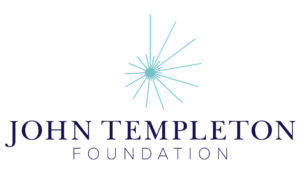
Funding provided in part by the John Templeton Foundation. The Templeton Foundation supports research and civil dialogue on the deepest and most perplexing questions facing humankind: Who are we? Why are we here? Where are we going? To learn more, please visit templeton.org.






